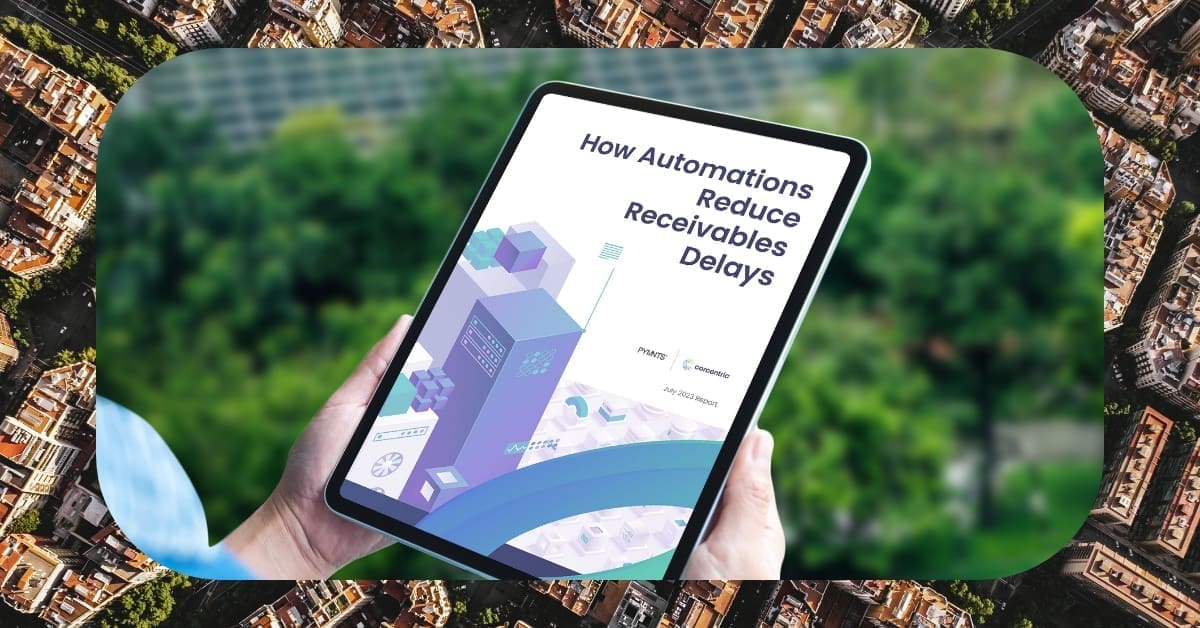Tapping Into Automated Cash APplication
Corcentric

AUTOMATE CASH APPLICATION
It is no surprise that businesses are continuing to move their order-to-cash business operations to the digital realm via automation; on average, companies in the US automate nearly 60% of their customer-receivables processes. Furthermore, automation of customer-receivables processes can positively increase the accuracy, efficiency, and customer experience for companies. Utilizing cash application solution can greatly accentuate the aforementioned benefits that automated order-to-cash processes can bring forth for business.
In this article, we will take comprehensive approach to explore what cash application solution can do for you, as well as provide step-by-step guide to unlocking its potential.
Understanding Cash Application
Cash Application (also known as Bank Reconciliation) is the process of ensuring that cash transactions, whether it be customer payments, bank fees, chargebacks, etc. are appropriately allocated and accounted for. This can be relatively cumbersome task if done manually due to the fact that it requires manual data clearance, multiple documentations, and often times requires personnel who are trained and understand accounting operations. Automated cash application solutions are perfect for businesses that face this dilemma due to the fact that it istreamlines the cash application process by capturing payments, remitting them for processing, and matching the customer’s paid invoices with those in the accounting system-all from centralized cloud solution. Additionally, automated cash application solutions often integrate with other solutions such as ERPs, payment gateways, POS systems, etc. to provide full 360-degree view of customer’s total orders.
Optimizing Your Automated Cash Application
While cash application solution provides innumerable benefits to businesses, automating cash application processes is not one-size-fits-all solution. In order to maximize its potential, there are few essential steps that companieshould follow in the implementation process.
Step One: Assessing Automation Needs
The first step in driving true automation within cash application process is to carry out an in-depth analysis of the current process and operations. This should include detailed inventory of systems, cash applications, manual processes and associated costs as this will permit you to understand your exact automation requirements. Additionally, an analysis may reveal whether smaller process automations are possible, which could provide far quicker deployment times and faster automation benefits.
Step Two: Acquiring Technology
The key to reaping all of the rewards from automation is selecting the right technology. Different solutions vary in price, capabilities and complexity, so it is important to acquire technology that matches your cash application needs. Make sure to research both cloud-based options and software solutions, as selecting the wrong option may incur costly delays and disruption to current processes.
Step Three: Adapting Cash Flows and Reconciliations
A successful cash application automation system requires reconciliation templates to be well-structured and efficient. Typically, this should include an automated cash flow structure, an improved customer experience when interacting with invoices, and automated emails triggers to customer when requisite liabilities have been met. Automation of invoice processing and reconciliation should also be supported, helping to ensure that invoices are paid promptly.
Step Four: Utilizing Software Tools and Payment Processors
The next step is to choose software tools and payment processors that match your organizations requirements. Payment gateways are an essential part of automating cash application while acting as the link between customers and payments, while payment processors are companies that process electronic payments as well as ensure customer data safety and compliance with applicable regulations. Additionally, software tools facilitate streamlined and efficient way for creditors to receive their payments and appropriately track progress.
Step Five: Approving and Executing
Once the cash application process has been thoroughly configured based on the previous steps, the next step is to approve and prepare the system for execution. It is critical to review the customer experience, system compatibility and to make sure that configuration is correctly in place prior to launch. It is also essential to make sure that all stakeholders are fully trained and prepared to manage and make adjustments to the system following the launch.
Step Six: Comparing Reports
Once implementation of the cash application process is complete, it is important to review the reports. Comparing automated reports with prior manual processes can help to identify areas for improvement, as well as adequately track progress on automating cash application process.
Step Seven: Optimizing Performance
Once an automated cash application system has been implemented, it is important to review processes and optimize performance based on discrepancies. This could include resolving any unmatched invoices, updating customer records, and assuring customer satisfaction. Additionally, it is good practice to constantly update the system for improved performance on an ongoing basis.
Conclusion
Automation of the cash application process is becoming increasingly popular among businesses-not only does it contribute to quicker customer-receivables cycle times and more efficient processes, but it also reduces the amount of physical labor and human error when handling transactions. By following the aforementioned steps, companies can fully optimize their order-to-cash processes and utilize the potential of centralized, automated cash application solution.




